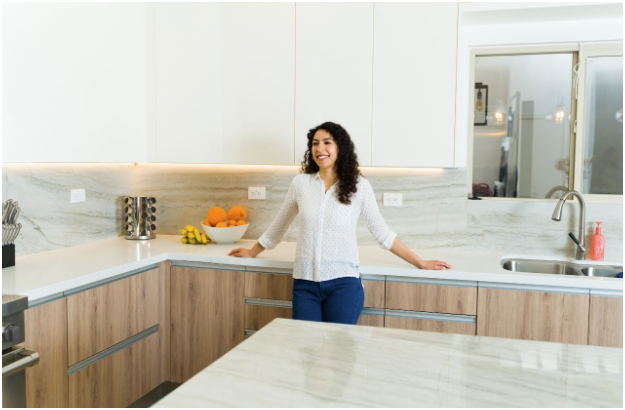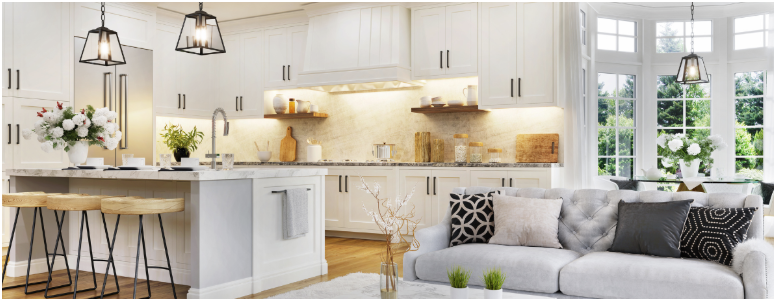Embarking on a kitchen or bathroom remodel is an exciting venture, promising a refreshed and revitalized space. However, without a solid plan, that excitement can quickly turn into stress and frustration. A well-structured plan is the bedrock of a successful remodel, ensuring your vision translates into reality while keeping you on budget and on schedule. This comprehensive, step-by-step guide will walk you through the entire planning process, from initial inspiration to the final finishing touches.
Phase 1: Defining Your Vision and Needs (Weeks 1-2)
Dream Big, But Be Realistic:
Start by brainstorming your ideal kitchen or bathroom. Gather inspiration from magazines, online platforms like Pinterest and Houzz, and home design blogs.
Create a mood board or inspiration folder to capture the styles, colors, and features you love.
However, temper your dreams with reality. Consider your budget, the existing layout of your space, and the overall style of your home.
Assess Your Needs and Priorities:
What are the current frustrations with your kitchen or bathroom? Is it lack of storage, poor layout, outdated fixtures, or simply a need for a style refresh?
Prioritize your needs versus your wants. Distinguish between essential upgrades and desirable but non-critical features.
Consider your lifestyle. Do you entertain frequently? Do you need a family-friendly bathroom? These factors will influence your design choices.
Establish a Realistic Budget:
Research average remodel costs in your area. Online cost estimators and contractor consultations can provide initial estimates.
Create a detailed budget breakdown, allocating funds for materials, labor, permits, and a contingency fund (10-20% of the total budget).
Be prepared for unexpected costs and prioritize spending on essential elements like plumbing and electrical work.
Phase 2: Design and Planning (Weeks 3-6)
Measure and Document Your Space:
Accurate measurements are crucial for planning the layout and ordering materials.
Create a detailed floor plan of your existing space, noting the location of plumbing, electrical outlets, and windows.
Take photos of your space from various angles to provide a visual reference.
Develop a Detailed Layout:
Consider the functionality and flow of your space. The kitchen work triangle (sink, stove, refrigerator) and bathroom traffic flow are essential considerations.
Experiment with different layouts using online design tools or by sketching on graph paper.
Think about storage solutions, appliance placement, and lighting design.
Select Materials and Finishes:
Visit showrooms and suppliers to explore options for cabinets, countertops, flooring, tile, fixtures, and appliances.
Gather samples and create a materials board to visualize the overall look.
Consider durability, maintenance, and style when making your selections.
Create a Detailed Design Plan:
Compile all your design decisions into a comprehensive plan, including floor plans, elevations, material selections, and lighting layouts.
This plan will serve as a blueprint for your contractor and ensure everyone is on the same page.
Phase 3: Hiring Professionals and Obtaining Permits (Weeks 7-10)
Research and Select Contractors:
Ask for referrals from friends, family, and neighbors.
Check online reviews and ratings from reputable sources.
Interview at least three contractors, asking about their experience, licensing, insurance, and references.
Obtain detailed quotes and compare them carefully.
Verify Licensing and Insurance:
Ensure your contractor is licensed and insured. This protects you from liability in case of accidents or damage.
Ask for proof of insurance and verify their licensing status with your local authorities.
Obtain Necessary Permits:
Many remodeling projects require permits, especially those involving structural changes, plumbing, or electrical work.
Your contractor should be able to assist with the permit process, but it's ultimately your responsibility to ensure they are obtained.
Factor permit fees into your budget and allow time for the approval process.
Finalize the Contract:
Review the contract carefully, ensuring it includes a detailed scope of work, payment schedule, timeline, and warranty information.
Don't hesitate to ask questions and negotiate terms before signing.
Phase 4: Project Execution and Management (Weeks 11-Ongoing)
Establish a Communication Plan:
Maintain regular communication with your contractor to stay informed of progress and address any concerns.
Establish clear communication channels and preferred methods of contact.
Prepare Your Home for Construction:
Clear the work area of furniture and belongings.
Protect adjacent areas from dust and debris using plastic sheeting or drop cloths.
Establish a designated storage area for materials and tools.
Monitor Progress and Address Issues:
Conduct regular site visits to monitor progress and ensure the work is being done according to the plan.
Address any issues or concerns promptly with your contractor.
Document all changes and agreements in writing.
Manage the Payment Schedule:
Adhere to the payment schedule outlined in the contract.
Avoid making large upfront payments and withhold a portion of the final payment until all work is completed to your satisfaction.
Conduct a Final Walk-Through:
Upon completion of the project, conduct a final walk-through with your contractor.
Inspect all work carefully and create a punch list of any remaining items that need to be addressed.
Enjoy Your New Space:
Once all punch list items are completed, you can finally enjoy your newly remodeled kitchen or bathroom!
Tips for a Smooth Remodel:
Be patient and flexible: Remodeling projects can be unpredictable, and delays or unexpected issues may arise.
Maintain open communication: Clear and consistent communication with your contractor is crucial for a successful project.
Stay organized: Keep all documents, receipts, and communication in one place.
Don't be afraid to ask questions: If you're unsure about anything, don't hesitate to ask your contractor for clarification.
Trust your instincts: If something doesn't feel right, address it promptly.
By following these steps and maintaining a proactive approach, you can transform your remodeling dreams into a stunning reality. Remember, thorough planning is the key to a successful and stress-free remodel, allowing you to create a space you'll love for years to come.
Subscribe to Cabinet Wholesalers's Blog












Comments